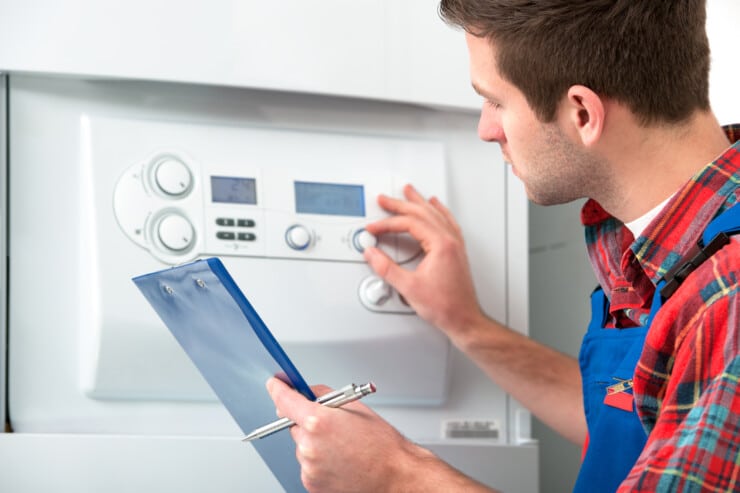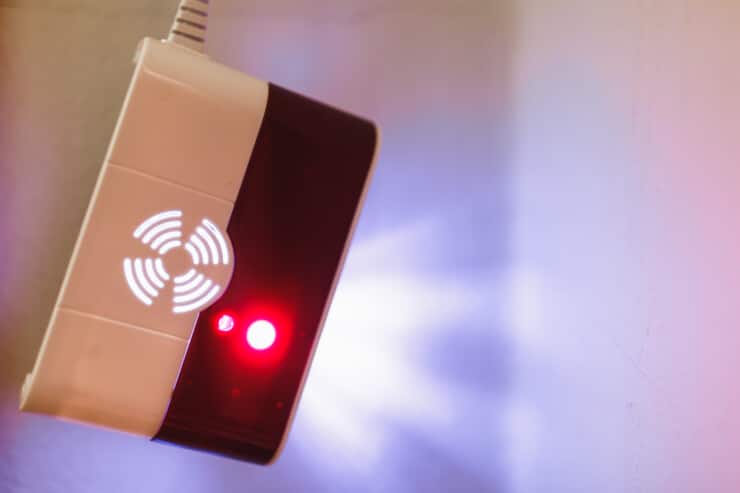Why Is There a Strange Kerosene Smell in My House?
A number of homeowners have encountered a distinct scent of kerosene and are puzzling over its source.
Not only is it annoying, but let’s face it – we all want our homes to smell fresh and inviting.
In this article, we’ll delve into the possible causes of that strange kerosene aroma wafting through your living space.
We understand your desire for a pleasant-smelling sanctuary, so get ready to put on your detective hat as we explore various reasons behind this mysterious scent.
By the end of this investigation, you’ll be equipped with the knowledge needed to identify and eliminate that pesky odor once and for all!
Investigating Heating System Issues

Imagine walking into your home and being met with an unexplained kerosene smell.
The suspense builds as you wonder if there’s a gas leak, or worse, if the house is at risk of exploding.
But before panicking, let’s delve deeper into the possible reasons behind this strange odor.
One of the most common causes for such odors in a household can be traced back to heating system issues.
Regular heating system maintenance is crucial for ensuring its efficiency and safety.
A poorly maintained furnace or boiler may produce malodorous fumes that seep throughout your home – leaving you puzzled about their origin.
Moreover, neglecting routine upkeep could also lead to more serious problems like carbon monoxide leaks which are hazardous to your health.
So, rather than allowing fear to take over, focus on the steps required to address these concerns effectively.
Start by scheduling regular inspections and tune-ups with a qualified technician who will examine all components of your heating system thoroughly.
They’ll not only identify any potential sources of unexplained odors but also provide recommendations on preventive measures that will keep your home safe and comfortable year-round.
Remember: knowledge is power when it comes to mastering control over your living environment!
Identifying Chemical Odors From Household Products
Unraveling the mystery of that strange kerosene smell in your house can be a challenge, but don’t worry – we’re here to help you master this task.
The first step is to identify possible odor sources related to household chemicals.
Many products used daily for cleaning, maintenance or repairs may contain volatile organic compounds (VOCs) that evaporate easily and produce strong smells similar to kerosene.
Some common examples include paint thinners, glues, solvents, and even some room fresheners.
The next phase in deciphering the origin of these chemical odors involves examining specific areas of your home where such household chemicals might be lurking.
Are you storing any potentially smelly substances in poorly ventilated spaces like basements, garages or utility rooms?
Make sure containers are tightly sealed and check for leaks or spills that could release fumes into your living space.
Another possibility worth considering is whether recent repair works or renovation projects involving painting, sealing or adhesives have taken place; if so, keep windows open whenever it’s safe to do so until those lingering VOCs dissipate.
Now that you’ve honed your detective skills by identifying potential odor sources and assessing their locations within your home, it’s time to take action.
Tackle each area one at a time – address storage issues by relocating items with strong smells outdoors or investing in proper ventilation solutions; clean up any spills promptly using appropriate safety precautions; allow freshly painted surfaces ample time to dry before closing windows and doors again.
By systematically addressing these concerns, not only will you eliminate that pesky kerosene-like smell from your abode but also create a healthier environment for yourself and loved ones.
And isn’t that mastery worth pursuing?
Checking For Gas Leaks

If you’ve noticed a strange kerosene smell in your home, it’s essential to take action immediately.
Gas leaks can be dangerous and pose a significant risk to your safety and the safety of others around you.
One of the first steps you should take is investing in gas detectors for your home.
These devices are specifically designed to detect various types of gases, including natural gas, propane, and carbon monoxide.
By installing gas detectors throughout your home strategically, you’re taking an active role in leak prevention and ensuring that your living environment remains safe.
Make sure to familiarize yourself with how these detectors work; this will empower you by giving you control over potential dangers lurking within your household.
It’s also important to regularly inspect any appliances or fixtures that use gas as their fuel source – vigilance is key when it comes to preventing hazardous situations from occurring.
Taking charge of maintaining a safe environment doesn’t have to feel like an overwhelming task; making small changes and being proactive can go a long way.
Don’t wait until there’s an emergency situation on hand – invest time now into learning about leak prevention techniques so that if the need arises (which we hope never happens), you’ll be prepared and confident enough to handle whatever comes your way effectively.
Examining Potential Mold And Mildew Problems
Now that we’ve identified the possibility of a kerosene smell, let’s take a closer look at another common issue in homes: mold and mildew.
These pesky invaders can not only create unpleasant odors but also pose health risks if left unchecked.
It’s crucial to remain vigilant about mold prevention and seek out effective mildew solutions.
- Regularly inspect damp areas in your home for signs of mold or mildew.
- Use dehumidifiers or fans to keep humidity levels low and promote proper ventilation.
- Clean affected surfaces with specialized cleaning products designed for mold and mildew removal.
Implementing these practices will help you maintain a healthy living environment while keeping unwanted smells at bay.
As you strive towards mastery over your household issues, it’s essential to remember that each problem requires thoughtful examination and persistence in finding an appropriate solution.
Whether it’s mysterious kerosene scents or stubborn mold growths, staying informed on effective ways to tackle these challenges makes all the difference in transforming our spaces into safe havens where we feel comfortable and secure.
Keep exploring new mold prevention techniques and experimenting with different mildew solutions until you find what works best for you – then celebrate your well-deserved peace of mind!
Addressing Poor Ventilation And Air Quality

It’s as if you’re living in a cloud of kerosene fumes, and it can feel suffocating. But don’t worry!
There are effective ways to improve the air quality and ventilation in your home that will help eliminate those pesky odors.
Let’s dive into some practical solutions for addressing poor ventilation and enhancing the overall air quality.
When it comes to tackling issues with indoor air quality, there are two main approaches: improving natural ventilation and using specific devices such as air purifiers.
To maximize results, consider implementing both strategies simultaneously.
Here is a handy table outlining some popular options:
| Ventilation Solutions | Air Purifiers |
|---|---|
| Open Windows & Doors | HEPA Filters |
| Install Exhaust Fans | Activated Carbon Filters |
| Use Attic Vents | UV-C Germicidal Lamps |
By incorporating these methods, you’ll create an environment where fresh outdoor air replaces stale indoor air, reducing odor-causing pollutants effectively.
Moreover, air purifiers work wonders in removing contaminants like dust particles, allergens, and even volatile organic compounds (VOCs) responsible for strange smells.
Your journey towards mastery over your home’s airflow doesn’t stop here; continue researching various ventilation solutions and experimenting with different combinations until you find what works best for you.
Remember that regularly changing filters on your HVAC system or portable air purifiers is essential for maintaining optimal performance levels.
Don’t let the scent of kerosene linger any longer – take action now!
Frequently Asked Questions
Can certain types of food or cooking methods cause a kerosene smell in my house?
Believe it or not, certain cooking methods and unusual ingredients could actually be the culprits behind that odd kerosene smell in your home.
Sometimes, when we experiment with new recipes or push our cooking appliances to their limits, unexpected aromas can emerge as a result.
It’s important to keep an open mind and embrace the possibility that you might have unintentionally created this peculiar scent while pursuing culinary greatness.
Next time you’re whipping up a feast, pay extra attention to how different ingredients interact with one another and how your trusted appliances handle them – who knows, you just might crack the mystery of the elusive kerosene odor!
Are there any health risks associated with the continuous inhalation of a kerosene-like odor in my home?
Breathing in a kerosene-like odor for extended periods can lead to various health issues, so it’s essential to recognize the signs and take action.
Kerosene exposure symptoms include dizziness, headache, nausea, and irritation of the eyes or respiratory tract.
To safeguard your wellbeing and maintain a pleasant living environment, implementing odor removal techniques such as proper ventilation, air purifiers, and frequent cleaning is crucial.
By proactively addressing these odors and minimizing exposure risks, you’ll master creating a healthier home atmosphere for yourself and your loved ones.
How can I effectively eliminate the kerosene smell from my house after identifying and resolving the issue?
Did you know that 60% of your taste is actually influenced by smell?
Ensuring a fresh and pleasant environment in your home is vital for an enjoyable living experience.
After identifying and resolving any kerosene-related issues, it’s time to focus on eliminating the lingering odor effectively.
Consider using natural kerosene alternatives like vinegar, baking soda, or activated charcoal to absorb and neutralize the unpleasant scent.
Additionally, prioritize proper ventilation by opening windows and doors throughout your house, as well as utilizing air purifiers with HEPA filters to combat the stubborn aroma.
By actively engaging in smell prevention techniques such as these, you’ll master the art of maintaining a healthy and inviting atmosphere within your home sweet home.
Can outdoor factors, such as nearby construction or industrial activities, contribute to a kerosene smell in my home?
Absolutely, outdoor factors like construction odors and industrial pollutants can seep into your home and contribute to a kerosene-like smell.
Nearby construction sites or factories may use solvents, fuels, or chemicals that emit strong odors resembling kerosene.
These smells can infiltrate your living space through open windows, doors, or even air vents.
It’s essential to keep an eye on local activities and take action when necessary – proper sealing of gaps in the house and using indoor air purifiers can help you maintain control over unwanted scents while mastering your living environment.
Should I consult a professional if I am unable to identify the source of the kerosene smell in my house?
Absolutely!
If you’ve tried investigating the source of the mysterious kerosene smell and ruled out any outdoor factors, it’s wise to consult a professional for assistance.
Not only can they help identify the origin, but they may also suggest kerosene alternatives or odor prevention methods to keep your home smelling fresh.
Don’t let this lingering scent hold mastery over your living space – take charge by seeking expert advice and enjoy the peace of mind that comes with having a safe and inviting environment for everyone who enters your home.
Final Thoughts
It’s essential to address any kerosene-like smell in your home promptly.
A study found that continuous exposure to low levels of kerosene fumes could lead to respiratory issues and eye irritation.
So, take the necessary steps to identify the source and eliminate the odor for a safer living environment.
We hope this article has provided you with valuable information on identifying and resolving the issue.
Remember, don’t hesitate to consult a professional if needed, as ensuring your family’s well-being is always worth it.







